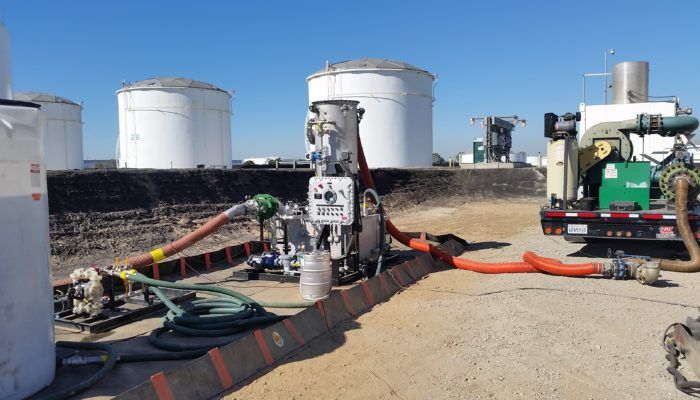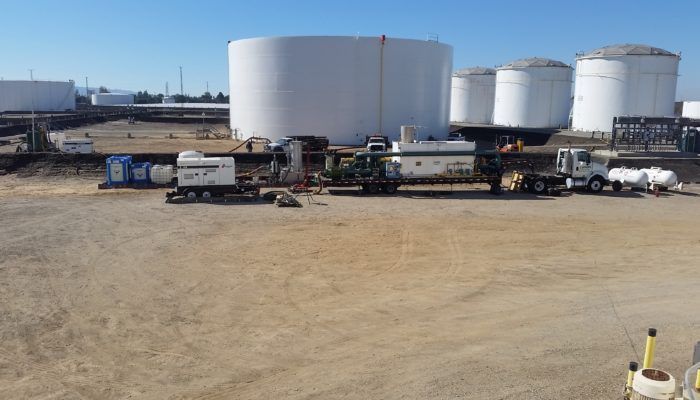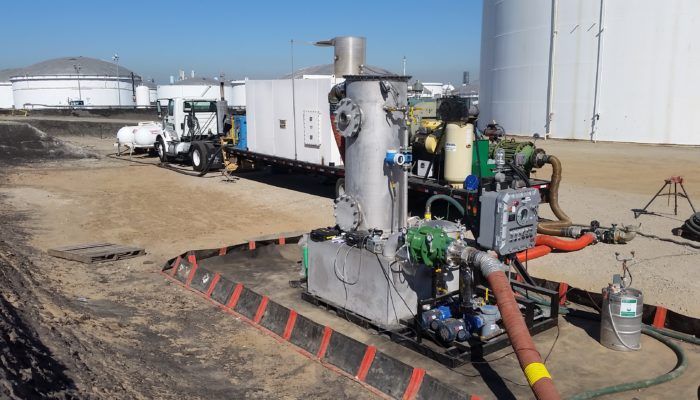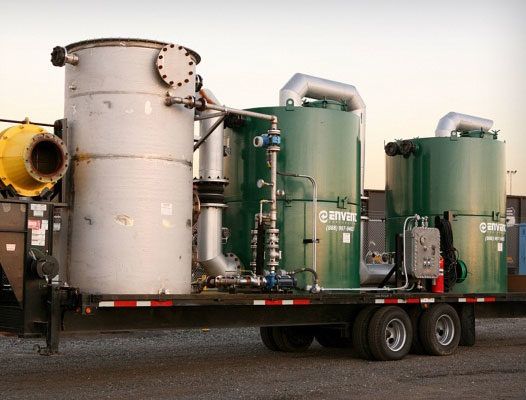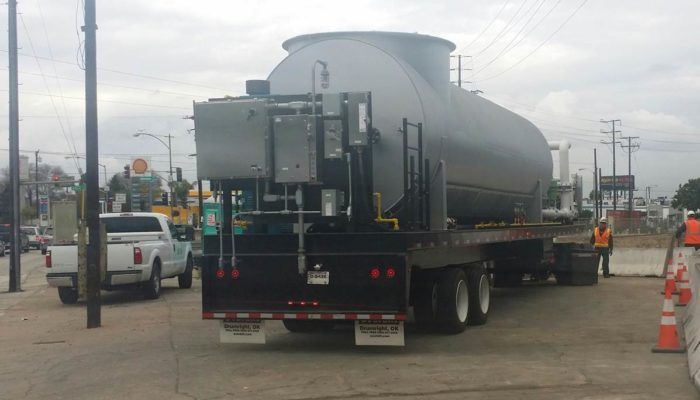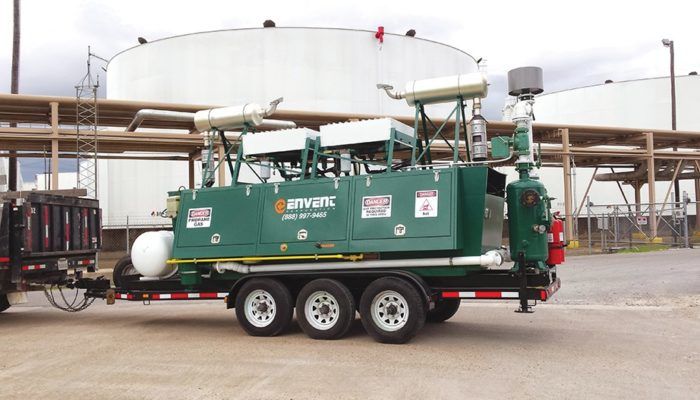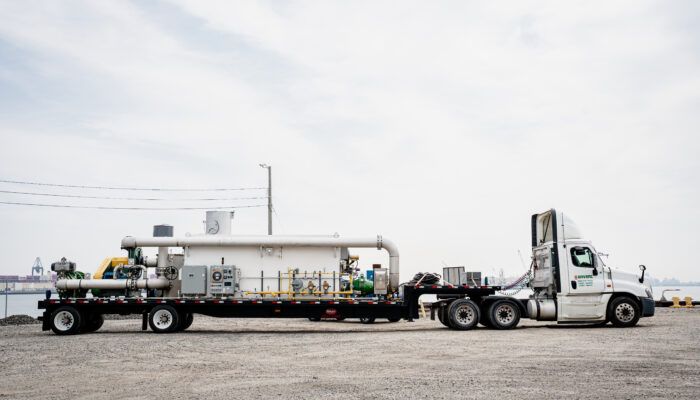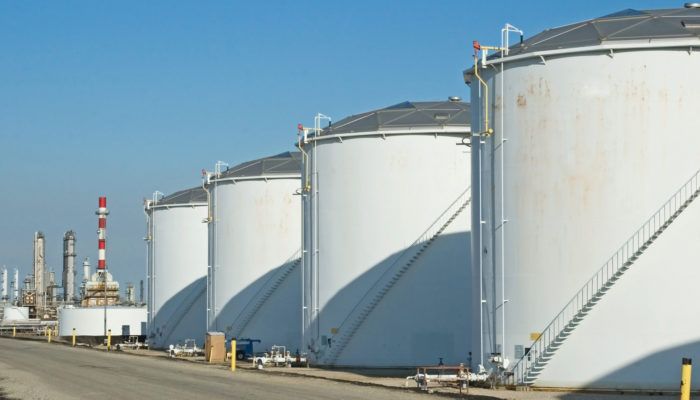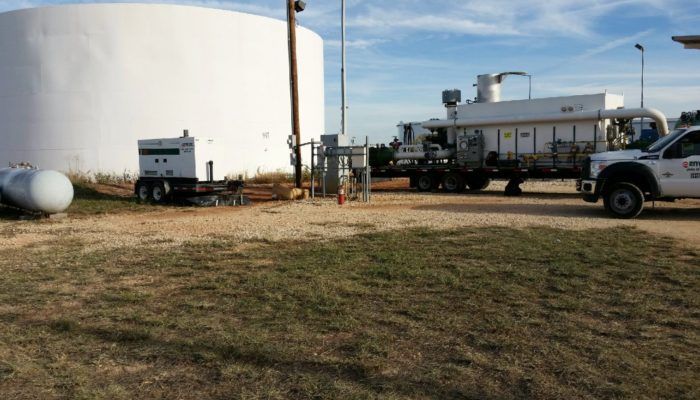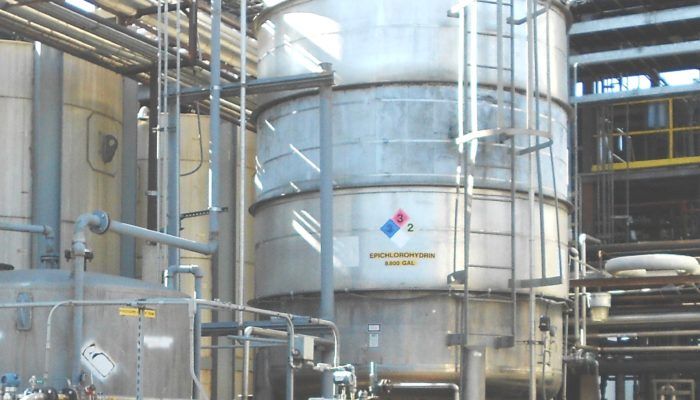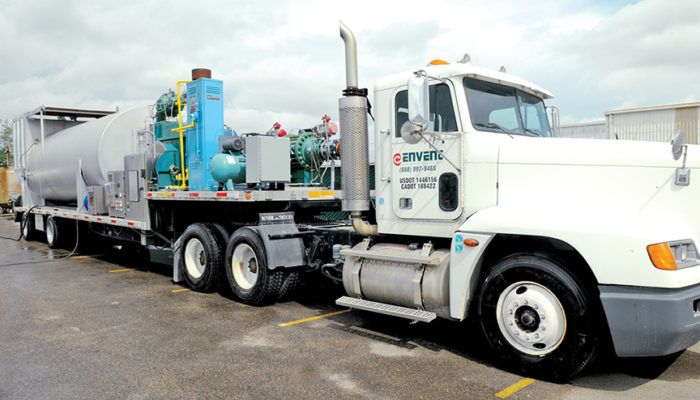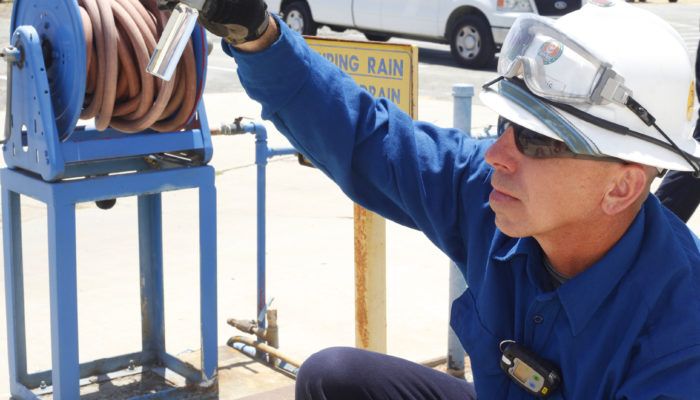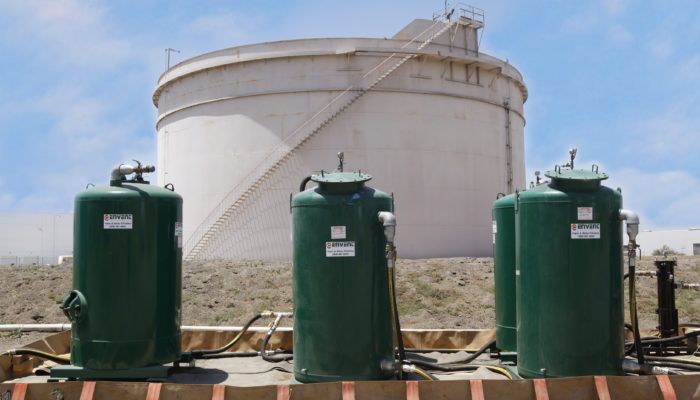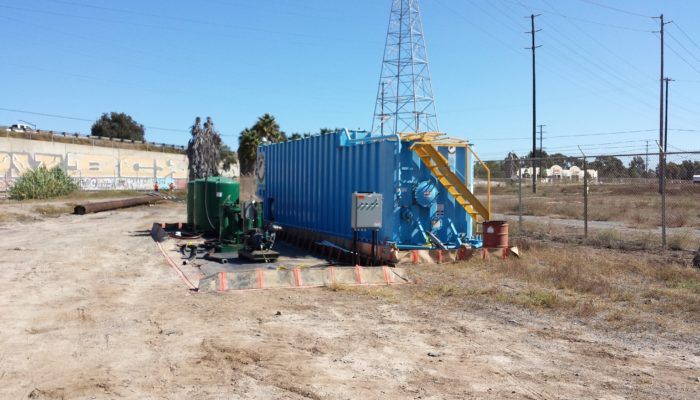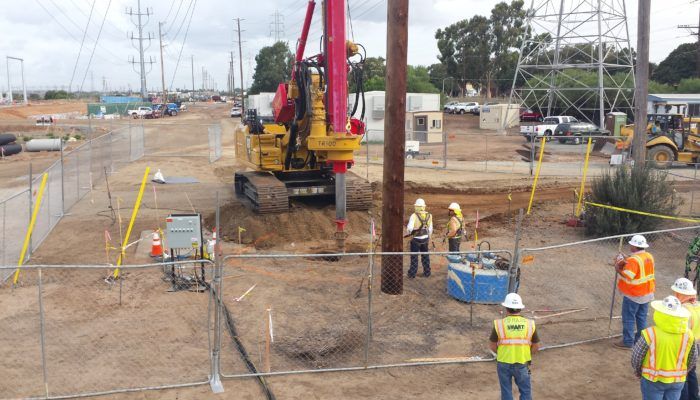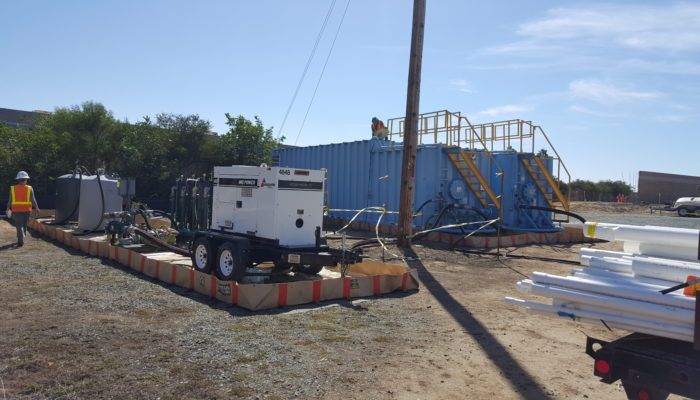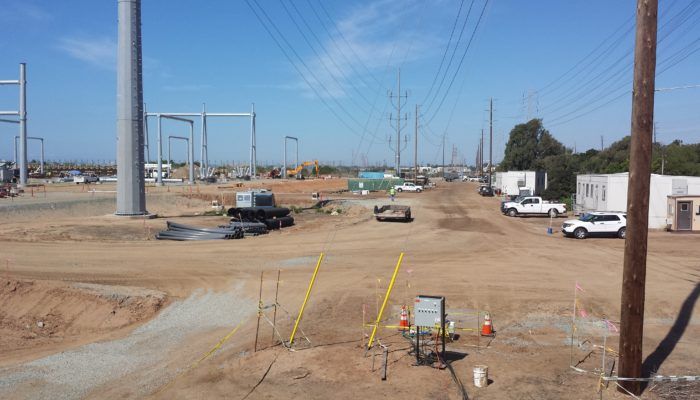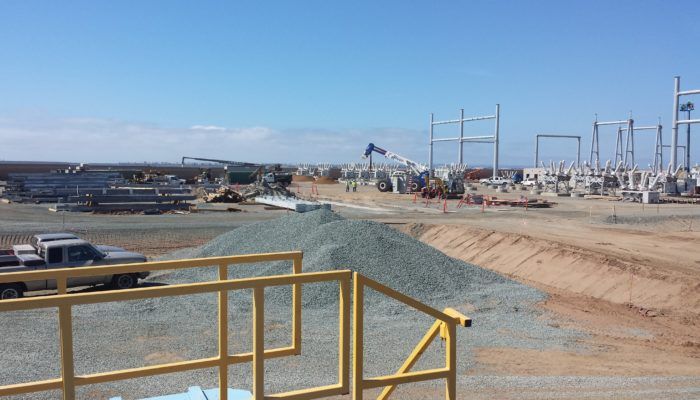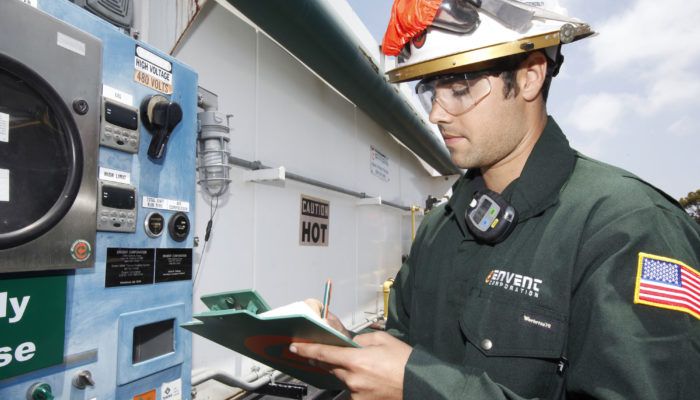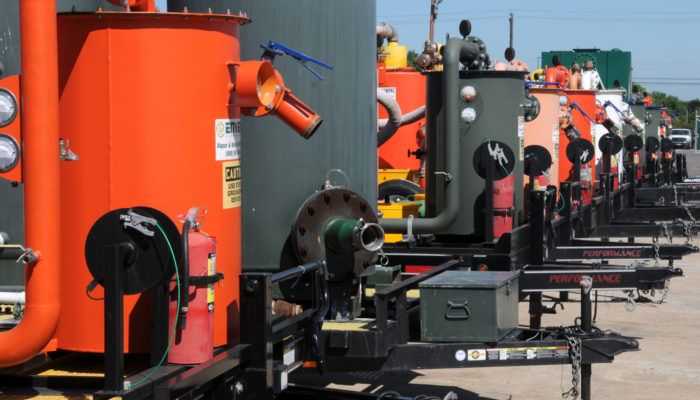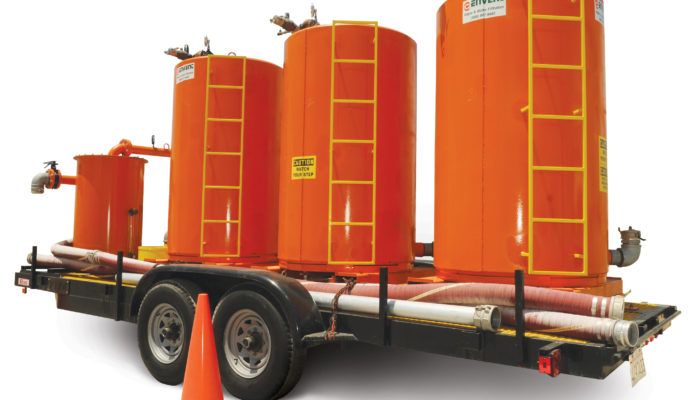Challenge
A sour water tank high in H2S needed vapor control provided during a turnaround while maintenance was done in the surrounding area. The H2S concentration was as high as 500,000ppm during parts of refinery operations. The H2S needed to be reduced to a safe level while the vapors were treated and vented to atmosphere.
Solution
Vapors from the tank were routed to a liquid recirculating scrubber, which reduced the H2S concentration to an acceptable limit to where the vapors could be sent to a thermal oxidizer. Envent monitored the inlet and outlet of the liquid scrubber to ensure efficient reduction of the H2S. When liquid break through was approached, the media was changed out to guarantee the thermal oxidizer was always combusting vapors that were below the threshold of EPA mandated levels of H2S combustion.
Benefits
Envent was able to successfully reduce the H2S emissions in the area so a turnaround could continue. Also, Envent was able to adjust to severe cold conditions and prevent solidification of the liquid media. This prevented costly delays while maintaining safe turnaround operations, eliminated odors and kept the customer in compliance.
